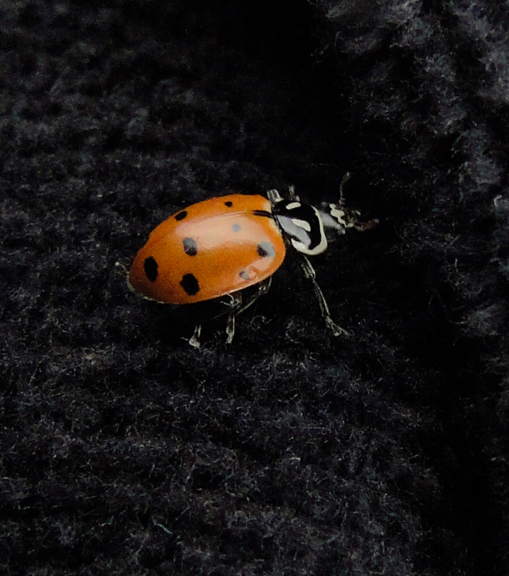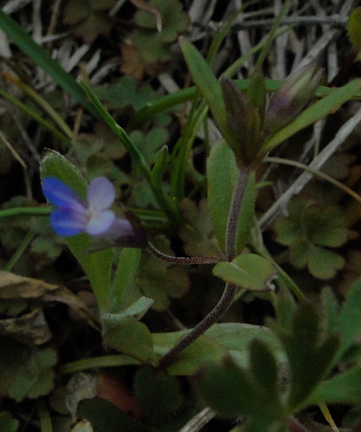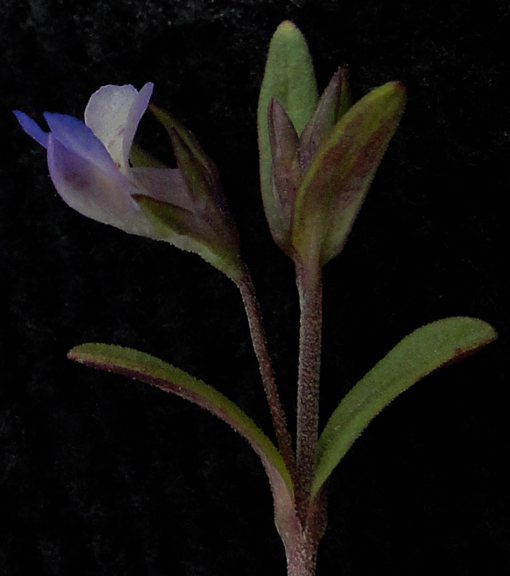4/9/2013 3:54:51 PM
April 9, 2013. Out about two hours and ten minutes. April
10, 2013, out probably less than an hour walking with my granddaughter, Sagi.
189 photos from 2 days, most from the ninth. 98 keepers.
On April 9th I only walked across the park from
the fireplug on Euclid
to south pond across to north pond, over to the north trail, looped highpoint
rock to see yellow bell hill. I returned west of tall pine grove.
On April 10th, with Sagi, we started again from
the fireplug on Euclid ,
walked east of north pond to see the early patch of Balsamorhiza sagittata,
balsamroot, around the pond to highpoint rock and yellow bell hill and returned
to the car south of tall pine grove.
I expected to find one new plant in bloom, Fritillaria pudica,
yellow bell. I found eighteen plants in bloom. This must be quite an early
year. But perhaps I was just luckier finding blossoming plants this year.
[There is a list of the plants I have found in bloom and bud this year with
blooming dates, when available for 2010, 2011 and 2012. My walks in 2013 have
been so few blooming dates are nearly meaningless.]
Lomatium gormanii, salt and pepper seems to be done for the
year. Even the buttercups are few, now. I looked for multi-stemmed buttercups
and buttercups with branched stems and did not find them.
Muscari sp, grape
hyacinth, Liliaceae family
0010-0020
There were several Muscari species, in bloom near the
fireplug. A few buds were open at the base of the inflorescence.
They were almost two weeks later, the 23rd of
April last year.
Wikipedia says the species of Muscari are hard to
distinguish.
*

I walked down to south pond looking for early violas.
I haven’t looked carefully at the trees surrounding south
pond. There are Salix lucida, Pacific willows and Acer negundo, box elder. Both
are dioecious, they have male plants and female plants.
Most plants are monoecious, they are hermaphroditic. They
have both male and female organs on the same plant.
Acer negundo, box
elder, Aceraceae family
210-220
I photographed male and female flowers on A. negundo.
Female
Male
Berberis aquifolium,
Oregon grape, Berberidaceae family
310-330
The Berberis aquifolium, Oregon grape buds were advanced.
They had a little color.
I see that some sources
call them Mahonia aquifolium.
The Burke Herbarium uses Berberis aquifolium.
The stem structure looks interesting. I wonder if the odd
structures are stipules. I think stipules are related to leaves, not flowers.
Firebugs maybe
510-530
I saw a lot of insect activity on a rotten stump just up from
the pond.
I thought we called these firebugs. Google’s firebugs have
similar body shapes but radically different coloring.
Whatever they are, some were running around like crazy. Some
were apparently mating. Some were a curious ‘dog pile’.
Taraxacum officinale,
dandelion, Asteraceae family
610-630
There are few dandelions in the park. I suppose they prefer
well watered lawns. These are near south pond.
The inflorescence of most Asteraceae family plants have a
central disk with disk florets on it and ray florets surrounding the central
disk like asters or daisies, [see Balsamorhiza sagittata, balsamroot, below].
From Wikipedia
Dandelions have no disk florets. They have only ray florets.
Some Asteraceae family plants have only disk florets.
Dandelion seeds are produced without pollination. The
process is called apomixis [or agamospermy both terms are used in seed plants.
It is asexual reproduction.].
The term, dandelion, is from French, for lion’s tooth. They
are edible in their entirety.
The blossoms are surrounded by two rows of bracts. The
bracts are said not to be sepals, I don’t know why. [Probably because they
surround a flower-head rather than an individual flower.]
The inner bracts are erect until the seeds mature. They then
flex downward to allow the seeds to disperse. The outer bracts are always
reflexed downward.
The flower heads mature into spherical seed heads called
‘blowballs’ containing many single seeded fruits called achenes. A hair-like
parachute called a ‘pappus’ [pappus are modified sepals] carries the seed on
the wind.
Between the pappus and the achene, is a stalk called ‘a
beak’ that elongates as the achene matures. [An achene is a fruit with a single
seed. It is indehiscent, it doesn’t open at maturity.]
The beak breaks easily. When the wind-born pappus strikes
anything the beak breaks, the achene falls to the ground and the pappus is
blown away.
Obviously, infantry soldiers, tired of walking to war
noticed this, invented parachutes and became paratroops.
Wikipedia says T. officinalis is native to North and South
America and Europe . Burke says they are
introduced from Europe .
630
The two rows of bracts are evident. The narrow inner bracts
are beginning to reflex.
Viola species,
Violaceae family
710-740
There was lots of viola foliage. I saw only one small
blossom.
There are native Viola species but I’m sure these were
introduced by the people that lived here. Their houses have been removed but
they were once nearby. There are many domestic plants gone wild here including
a tall hedge of syringa vulgaris, lilac. [Lilac: Oleaceae family, the olive
family. Native to the Balkan Peninsula where
it grows on rocky hills.]
Burke lists many native violas in Washington state, most of them with yellow
blossoms. There is one, Viola nephrophylla, northern bog violet, that looks a
little like our flower. I only see our viola near the pond.

Salix lucida, Pacific
willow, Salicaceae family
810-830
More vocabulary problems. I got the ‘scientific name’ Salix
lucida for Pacific willow somewhere. I see that the Burke Herbarium, my usual
authority for ‘scientific names’ uses Salix lasiandra. USDA and other sources
use Salix lucida subspecies lasiandra. Oh, well.
The willow flowers continue to be a problem. I have not
identified male and female plants. I read somewhere that catkins on female
plants were green but I have not seen distinctively green catkins in the park.
The sources disagree about the color of S. lasiandra catkins.
The color of catkins ranges from yellow to red-brown, depending on the source.
No sources mention a special color for female flowers.
This from Flora of North America :
“Catkins (fruiting in summer, persistent);
staminate 21-78 × 8-15 mm, flowering branchlet 3-27 mm; pistillate moderately
to very densely flowered, slender, stout, or subglobose, 18.5-103 × 6-17 mm,
flowering branchlet 6-56 mm; floral bract 1.7-4 mm, apex rounded, entire,
toothed, or erose, abaxially hairy throughout or proximally, hairs wavy. Staminate
flowers: abaxial nectary (usually present), (0-)0.4-0.8 mm, adaxial nectary
square or ovate, 0.2-0.6 mm, nectaries distinct or connate and shallowly
cup-shaped; stamens 3-6; filaments distinct, hairy on proximal 1/2 or basally;
anthers ellipsoid, shortly cylindrical, obovoid, or globose, 0.6-1 mm. Pistillate
flowers: adaxial nectary square or ovate, 0.2-0.6 mm, shorter than stipe;
stipe 0.8-4 mm; ovary pyriform, beak slightly bulged below or gradually
tapering to styles; ovules 16-30 per ovary; styles connate, 0.2-0.8 mm; stigmas
broadly cylindrical or 2 plump lobes, 0.2-0.4 mm. Capsules 4-11 mm.”


Montia linearis,
narrow leaved miner’s lettuce, Montiaceae family
910-990
The smallest little white flowers of the day were Draba
verna, spring whitlow grass, about 1/16 inch across. The larger abundant little
white flowers were Montia linearis, narrow leaf miner’s lettuce about 1/4 inch
across. It seemed to be everywhere. I didn’t identify it in the field. The
flowers seemed too be too abundant to be Montia linearis and it did not seem to
have succulent leaves till I got the photos into the computer.
I reread my photo-biography article for Montia linearis. I
see that there are several questions to ask with my camera. I need to get out
again soon.
The inflorescence is called a raceme by some sources. A
raceme has older flowers at the base and new flowers developing at the apex. I
don’t see that in my photos, not yet. The open blossom is at the apex but there
seem to be developing buds below.
930
Some sources speak of the petals being unequal. While that
is true I wonder how distinctive it is as a descriptive feature. I need to pay attention
to unequal petals in other flowers.
Camassia quamash,
common camas, Liliaceae family
1010-1040
There was a lot of Camassia quamash foliage in the seep west
of south pond.
It seems that the camas that grow in drier areas develop
earlier. I photographed a small bud as I got away from south pond. I photographed
a well developed bud on the dry rise above north pond.


Draba verna, spring
whitlow grass, Brassicaceae family
1110
I did a snapshot of Draba verna west of south pond just to
record that they are still abundant.
Fritillaria pudica,
yellow bell, Liliaceae family
1210-1230
There were lots of Fritillaria pudica. Some on the top of
yellow bell hill are getting dark. I suppose they have been there awhile.


Olsynium douglasii,
grass widow, Iridaceae family
1310
There are still lots of Olsynium douglasii.
Lomatium triternatum,
9 leaf biscuitroot, Apiaceae family
1410-1450
There are lots of Lomatium triternatum, 9 leaf biscuitroot.
I recorded a young umbel, not as yet unfolded.

Allium geyeri,
Geyer’s onion, both pink and white, Liliaceae family
1510-1540
The Allium geyeri both pink and white along the path from
the fireplug on Euclid
to junction pine on the main trail are in bud.
Ribes aureum, golden
currant, Grossulariaceae family
1610
The buds on the Ribes aureum, golden currant are well
developed.

North pond dry
1710
It was a day of
broken overcast with good clouds. I did a landscape with clouds to record the
fact that north pond is dry. There is probably a damp spot but I didn’t check.
South pond is receding fast.
Amelanchier
alnifolia, saskatoon, Rosaceae family
1810-1820
Leaf buds are just developing on Amelanchier alnifolia,
saskatoon, west of north pond. I forgot to check the early A. alnifolia south
of south pond. I think it is beginning to leaf out.
Phlox caespitosa,
tufted phlox, Polemoniaceae family
1910-1940
There were Phlox caespitosa everywhere.


Micranthes nidifica,
peak saxifrage, Saxifragaceae family
2010-2040
There were Micranthes nidifica in bud everywhere. I saw only
one plant with a blossom and it had only one blossom. I see ‘nesting saxifrage
and ‘swamp saxifrage’ as alternate common names. I don’t see this plant in wet
areas.
I’ll try to pay attention, in case I’m wrong about that.
Basal leaves
Erigeron compositus,
cutleaf fleabane, Asteraceae family
2110-2120
There were a few Erigeron compositus in bloom, lots in bud.

Moss
2210
A snapshot of moss just for fun.
Lithophragma glabrum,
woodland star, Saxifragaceae family
2310-2370
I saw a tiny Lithophragma glabrum on the east slope of
yellow bell hill. I saw only one blossom last year. I’ve seen only this blossom
this year. I have seen its foliage in various places, looking old, as if its
blossoms have come and gone.
The red structures at various nodes on the plant are
‘bulblets’, next year’s plants. They are also called bulbils. They drop to the ground when mature.
An article on the bulblets of a different plant, Dicentra cucullaria, says: “These bulblets go dormant after the plant goes to fruit, and they remain dormant until fall. The beginning stages of leaves and flower buds are then formed underground. These primordial leaves and flower buds remain dormant until the spring, when they emerge from the mesic forest floor.” The free dictionary: “Growing in conditions of medium water supply mesic plants.”


Ladybug
2410-2450
A ladybug landed on my black towel as I was trying to
photograph L. glabrum. I chased it for awhile. I was surprised to see the
extended ‘face’ of the final photo. Too bad the face is a blur.

Huperzia species,
club moss, Lycopodiaceae family
2510-2540
Ken Swedberg says club moss is not a moss but, [I hope I am
not misinterpreting him] a precursor plant for modern vascular plants. Maybe he
said it is a vascular plant but a very early form.
No photos of Pacific Northwest Huperzia look anything like
these. Flikr has a Huperzia carinata from the tropics that hangs down with a
similar structure.
8 club moss in West
Virginia , 4 common. Used once for Christmas
directions. Also used in fireworks.
Lycopodium clavatum looks closest to our plant.
Height: 3 to 10
inches
Leaves: Tipped
with a fine hair
Branch width: 1/8 inch
Spores: On
fork-shaped growths
that grow from the top of some
branches
Growth pattern: Trailing
Habitat: Woods and swamps
[[Our plant is in dry, open
grassland.]]
Note: Native Americans made
a tea of the plant to treat pain,
fever and weakness. In the old
days, the spores were used to
treat diarrhea, dysentery, gas and
rheumatism. The spores were
also used as a diuretic and to stop
bleeding. The spores were used
in medicinal powders for baby
chafing, tangled or matted hair with parasites
and strep
rashes.
Warn ing : This plant contains a toxic alkaloid.
Burke has Lycopodium clavatum
in moist conifer forests and swamps. The photos show very distinctive fruiting
bodies. Common name, ‘common club moss’, also ‘stag’s horn moss’. Produces
spores April through October. No text description. Several excellent photos by
Legler and Carr.
If this is our plant, our plant
is stunted and then some. Those fruiting bodies would be easy to see and I have
not seen them.
Lithophragma parviflora, prairie star,
Saxifragaceae family
2610
Lithophragma parviflora,
prairie star, in bud.

Collinsia parviflora, blue eyed Mary,
Scrophulariaceae family
2710-2740
I saw a single Collinsia
parviflora, blue eyed Mary in bloom on the side of yellow bell hill on the
ninth. I saw more, there, on the tenth.
Prunus species, plum tree, Roseaceae family
2810-2860
The park crosses Ash Place and drops
down to Ash Street
incorporating the spring on the side-hill.
The Prunus species, plum tree
is across Ash Place
at the top of the hill.
I’ve never searched that part
of the park for plants.

April 10, 2013
My granddaughter, Sagi walked
with me April 10th. I wanted to show her a little of the park and to
reshoot some bad photos of the day before. Sagi found the shooting star for me.
And she let me know that many of the flowers I showed her had been in bloom for
some time where she walks in south-side areas.
Balsamorhiza sagittata, balsamroot, Asteraceae
family
2910-2930
I had seen Balsamorhiza
sagittata, balsamroot in bud the day before and failed to photograph it. We
walked to the early blooming patch east of north pond beside the north access
trail and it was in bloom.
B. sagittata is Asteraceae and
has both disk flowers and ray flowers. You can see the disk flowers clearly in photo
2930. You have to look carefully to see the sexual features of the ray flowers.
I suppose they are stamens but I don’t know that.
Perhaps I will do some dissection
… someday.


Dodecatheon pulchellum, shooting star, Primulaceae
family
3010-3020
There were several Dodecatheon
pulchellum, shooting stars south of highpoint rock.
I had checked the area along
the north trail where I saw early D. pulchellum the last two years and saw
nothing.
I looked for the white variety
where I had seen them last year but didn’t see any.
Lithospermum arvense, corn gromwell, Boraginaceae
family
3110-3130
As we were returning to the car
I saw a Lithospermum arvense in the crack between the asphalt and the curbing.
Notice that the petals are not
separate, they are united. This is typical of the Boraginaceae family. The
short article on Boraginaceae in Montana Plant Life lists a few species. There
is a Myosotis species on the list of Boraginaceae. We will have Myosotis
stricta, blue scorpion grass later. It is also called ‘small flowered forget me
not’.
*****************************************************************************************
The plants in bloom and plants in bud observed April 09-10,
2013.
I only walked from the fireplug on Euclid to south pond across to north pond,
around north pond and return west of tall pine grove. I only walked around
north pond on the tenth. I did get to yellow bell hill and the north-side trail
on the ninth and tenth.
The dates below are very, very rough. The whole park is
never observed on any walk. I tried to walk every 5 days in 2012. That is not
often enough.
One may hope that others will pick up this project and
refine the dates over the years to come.
2010 dates are from Grand Cummings records.
*marks plants that have been observed on previous outings.
Plants only seen in bud so far this year are indicated by
the word, ‘bud’. Dates following plants in bud are blooming times from previous
years.
Observed
in bloom
2010 2011 2012
*Lomatium gormanii – They seem to have bloomed and gone. I
saw none today but didn’t look down in the shading woods where I have seen them
later in the year … near the tall cairn.
*Lomatium gormanii 1/22 1/16 1/10
*Ranunculus glaberrimus 2/8 1/16 3/14
Muscari sp. 4/23
Acer negundo, female
Acer negundo, male
Berberis aquifolium bud 4/23
Taraxacum officinalis 4/20 4/23
Viola species 3/25 4/11
*Salix lasiandra, Pacific willow
Montia linearis, narrow leaf miner’s lettuce 4/1 4/8 4/17
Camassia quamash bud 4/16 5/9 4/28
*Draba verna 4/8 4/1 3/27
Fratillaria pudica, yellow bell 3/28 4/7 4/11
*Olsynium douglasii 3/15 3/22 4/3
Lomatium triternatum, 9 leaf biscuitroot 3/29 4/14 4/11
*Lomatium macrocarpum, bigseed biscuitroot 3/26 4/23
Allium geyeri, pink bud 5/17 5/9 [bud 4/17/12]
Allium geyeri, white bud 5/26 5/9
Ribes aureum bud 4/10 4/27 4/23
Phlox caespitosa, tufted phlox 3/25 4/14 4/17
Micranthes nidifica, peak saxifrage 4/6 4/16 4/23
Erigeron compositus, cutleaf fleabane 3/29 4/27 4/17
Lithophragma glabrum, woodland star 4/5 4/5 4/17
Lithophragma parviflora, prairie star bud 4/5 4/28
Collinsia parviflora, blue eyed Mary 4/6 4/27 4/23
Prunus species, prune tree
Balsamorhiza sagittata, balsamroot 4/16 5/2 4/23
Dodecatheon pulchellum, shooting star 4/22 5/9 4/23
Lithospermum arvense, corn gromwell 4/28
Huperzia species or perhaps Lycopodium clavatum, a club moss
[no blossom – spores]














































































No comments:
Post a Comment